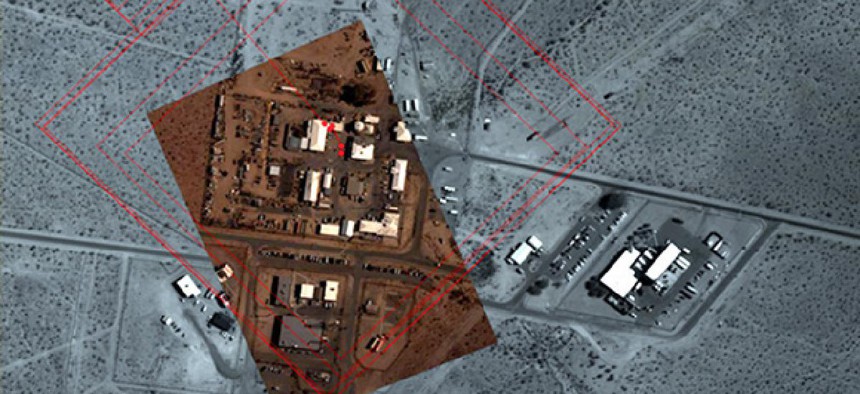Air Force continues advanced surveillance aircraft funding in Afghanistan

Los Alamos National Laboratory
Angel Fire is like ‘Google Earth and TiVo on steroids.’
The Air Force awarded SAIC a $74.4 million contract Friday to continue operating in Afghanistan surveillance aircraft that provide ground commanders with what the service describes as “Google Earth and TiVo-like capabilities on steroids.”
The surveillance system, dubbed Angel Fire, is flown on four modified twin engine King Air 90 turboprop aircraft equipped with wide-angle cameras that provide broader coverage than the optical sensors unmanned aircraft systems carry, according to the Marine Corps. The service backed fielding of the system after a demonstration at the Marine Corps Air Ground Combat Center in Twentynine Palms, Calif., in 2006.
The Marine Corps said Angel Fire, jointly developed by the Air Force Research Laboratory and Los Alamos National Laboratory, is “superior to current unmanned aerial systems in that a typical UAS [collects images of] a relatively small, constantly changing area as the air vehicle moves. [Angel Fire] provides a larger, persistent, geo-rectified image with archival capability.”
While the use of a wide-angel lens typically results in a loss of detail, the Angel Fire sensor and software “mitigates this limitation,” resulting in enhanced resolution sufficient to identify individuals on the ground. Angel Fire also includes ground stations packed with computer servers and workstations that provide the TiVo-like replay capability, allowing analysts to review data transmitted from the aircraft at the rate of one to two frames per second.
Air Force Col. Mark Koch, who served as commander of the 922nd Expeditionary Reconnaissance Flight in 2008 in Iraq, where Angel Fire was first deployed, said the system is the “first of its kind to provide real-time, persistent, wide-area intelligence, surveillance and reconnaissance to a ground commander at a tactical level.”






